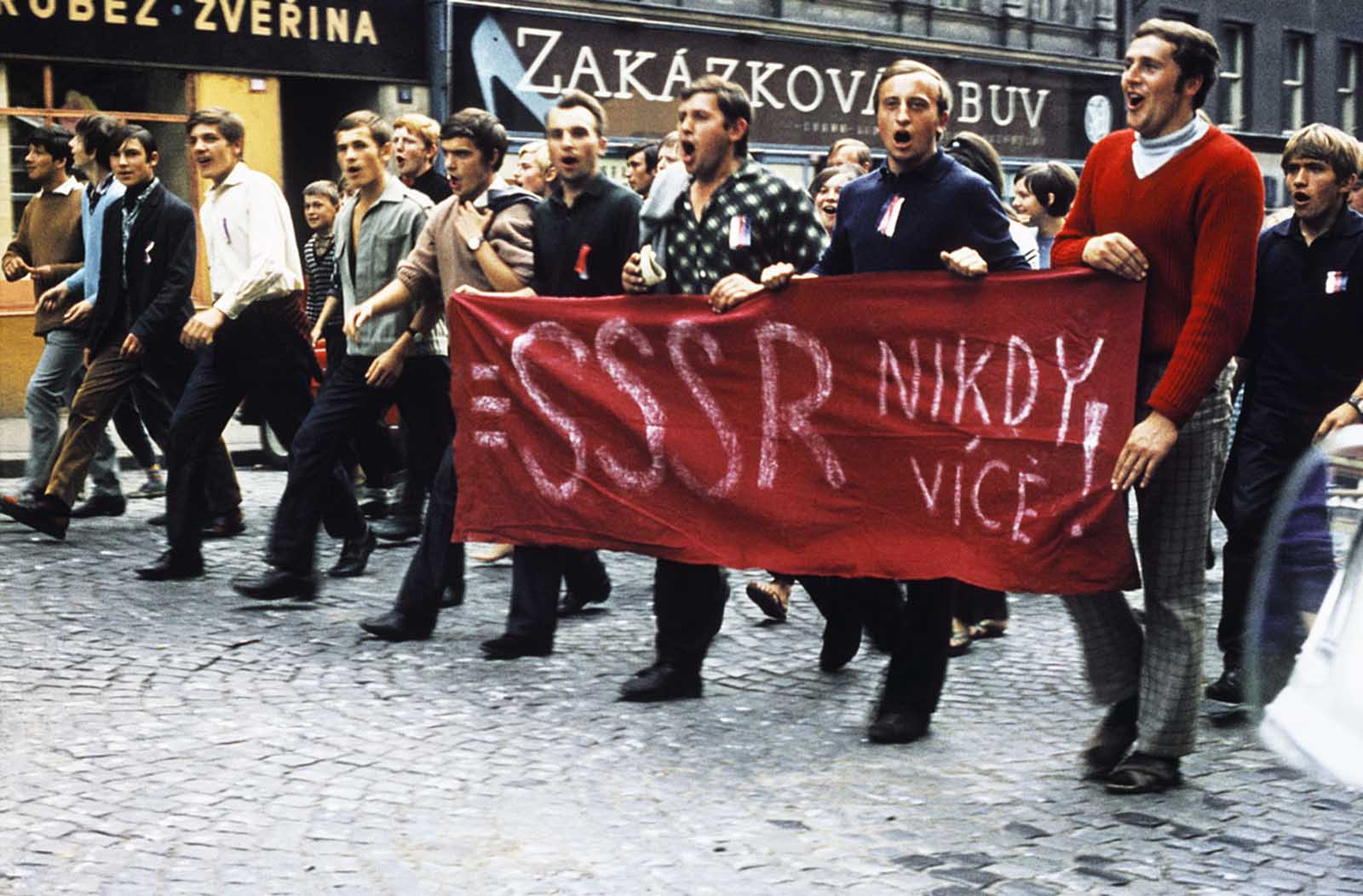The first months of 1968 had brought a renaissance of political and cultural life in what was then Czechoslovakia. Journalists and students were calling for an end to censorship, public rallies in support of reform erupted in Prague and beyond, and that year’s May Day commemorations were seized upon by those demanding greater freedoms. Upon assuming the Czechoslovak leadership in January by becoming the first secretary of the Communist Party of Czechoslovakia, Alexander Dubcek quickly declared his intention to push ahead with liberalizations that included freedom of speech and religion, an end to censorship and travel restrictions, and industrial and agricultural reforms. By April the government had published an “action programme” outlining Dubcek’s plans to establish “socialism with a human face”. The plan provided for a gradual democratization of the political system over a 10-year period, economic liberalizations and called for Communists to compete with other parties in future elections. The government officially ended its censorship policy in June. Alarmed by these moves and what appeared to be the beginning of the end of Czechoslovak Communism, several fellow Warsaw Pact nations made their objections known in a July communiqué, saying the Czechoslovak reform programme “jeopardizes the common vital interests of other socialist countries”. Soviet leader Leonid Brezhnev tried to curtail the Prague Spring’s momentum with a series of talks, meeting directly with Dubcek in late July in the small border town of Cierna nad Tisou. Brezhnev demanded key reformers be removed from leadership positions and restrictions be tightened on the media; Dubcek defended the reformist moves while reiterating his commitment to the Warsaw Pact and the Eastern Bloc economic alliance known as Comecon. Unappeased, by mid-August the Kremlin had decided to intervene more forcefully. Shortly before midnight on August 20, 250,000 Soviet and Warsaw Pact troops from Poland, Hungary, Bulgaria and East Germany (Romania and Albania refused to take part) invaded Czechoslovakia to put an end to the reform efforts, with the occupying forces eventually totaling 500,000. “Operation Danube” was the largest military mobilization in Europe since the end of World War II. Although the Soviet crackdown on Czechoslovakia was swift and successful, small-scale resistance continued throughout early 1969 while the Soviets struggled to install a stable government. Finally, in April of 1969, the Soviets forced Dubcek from power in favor of a more conservative administrator. In the years that followed, the new leadership reestablished government censorship and controls preventing freedom of movement, but it also improved economic conditions, eliminating one of the sources for revolutionary fervor. Czechoslovakia once again became a cooperative member of the Warsaw Pact. After the invasion, the Soviet leadership justified the use of force in Prague under what would become known as the Brezhnev Doctrine, which stated that Moscow had the right to intervene in any country where a communist government had been threatened. This doctrine, established to justify Soviet action in Czechoslovakia, also became the primary justification for the Soviet invasion of Afghanistan in 1979, and even before that it helped to finalize the Sino-Soviet split, as Beijing feared that the Soviet Union would use the doctrine as a justification to invade or interfere with Chinese communism. (Photo credit: Libor Hajsky / Reuters / AP / Hulton-Deutsch Collection). Notify me of new posts by email.
Δ Subscribe

























